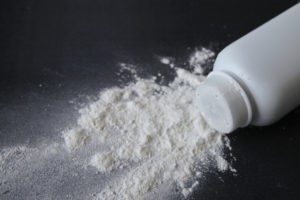Written by: Shepard Law Firm Staff
When most people think of asbestos, they picture a dark and dusty industrial building, a power plant with insulated steam pipes, or an old, noisy boiler in a basement of a run-down school. Because of these pre-disposed beliefs about what asbestos is and where it is found, the average person that did not work in an industrial trade is likely to think they have never come into contact with asbestos.

Few people realize that asbestos can hide in other places and products besides factories.
But asbestos can be found in unlikely places and products. For instance, most people are unaware that everyday beauty products such as baby powder and talcum powder were at times contaminated with deadly asbestos fibers. A number of lawsuits have been brought by individuals who used the Cashmere Bouquet brand scented talcum powder for a number of years, and later developed mesothelioma or other asbestos-related diseases. How can talcum powder contain asbestos? The connection between talc and asbestos is due to the close proximity of the two minerals in many areas of the earth’s surface. Tremolite, which is a type of asbestos fiber, is frequently found in the same areas where other minerals are mined, particularly vermiculite and talc. Mines that produced talc have often been found to also have tremolite asbestos fibers in the area from which the talc was being mined. In addition to causing asbestos-related diseases such as mesothelioma and lung cancer, there is also evidence that regular use of cosmetic talc may cause ovarian cancer in women.
Additionally, anyone who was involved with a home renovation project in the 1970’s or earlier likely worked with some type of asbestos containing product. Many building products in the late 1970’s and early 1980’s such as roofing shingles, floor tile, and joint compound contained asbestos fibers. Roofing shingles and floor tile would often have to be cut to size, which created dangerous asbestos dust. If you performed any home renovation work involving drywall or sheetrock during this time period, it is likely that joint compound was applied between sections of the new walls. And because most joint compound contained asbestos fibers until approximately 1980, when the joints between the walls were sanded, asbestos dust would be created.
As you can see, even if you never worked in an industrial trade or at a commercial facility, you may have been exposed to asbestos through a variety of different products, including products that are in our homes. And because many people forget how small asbestos fibers are, they underestimate the dangers of exposure. Check out the size comparison at this site to see just how small asbestos fibers are. And if you or a loved one has been diagnosed with an asbestos related disease, please contact one of our attorneys.